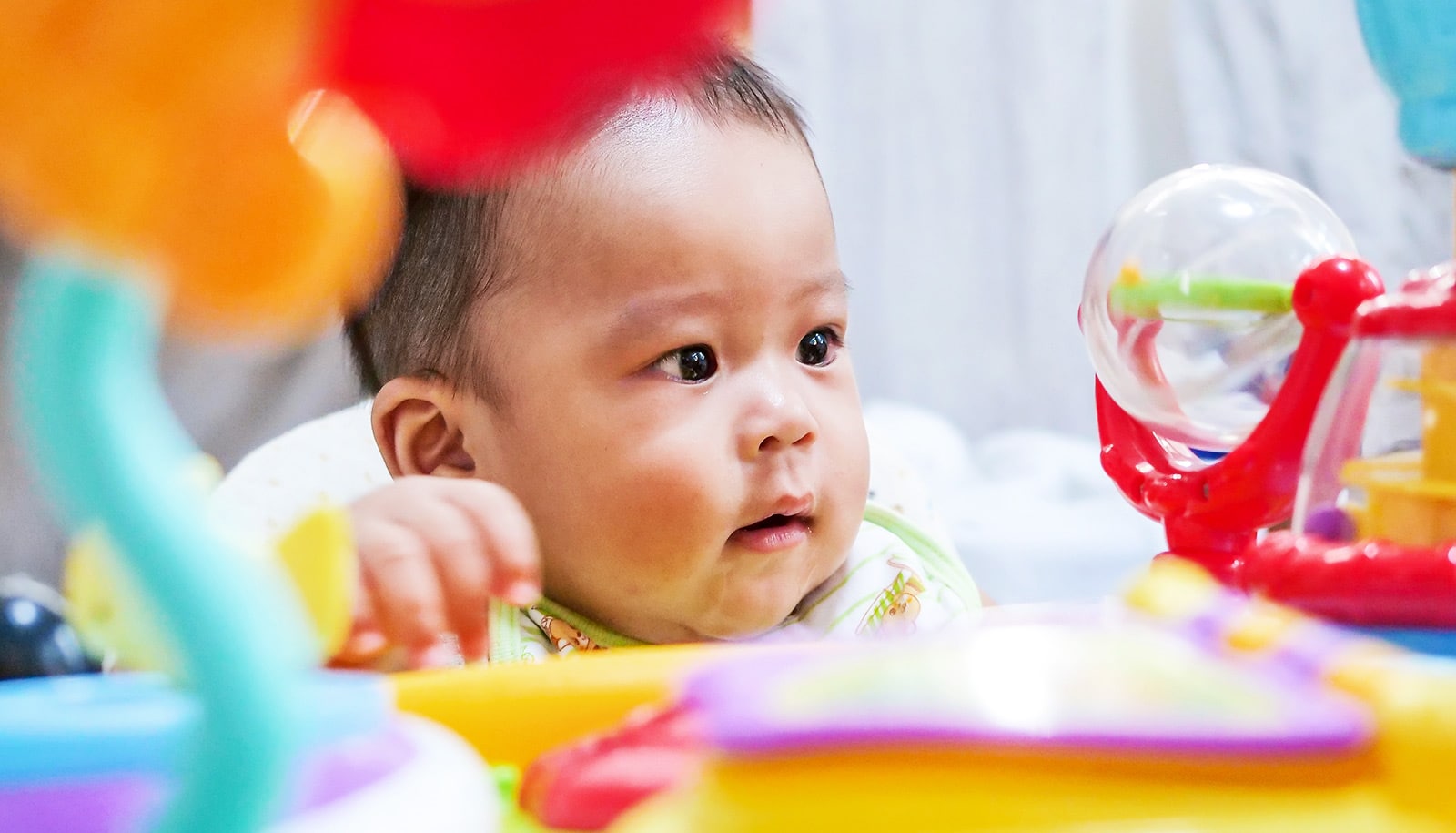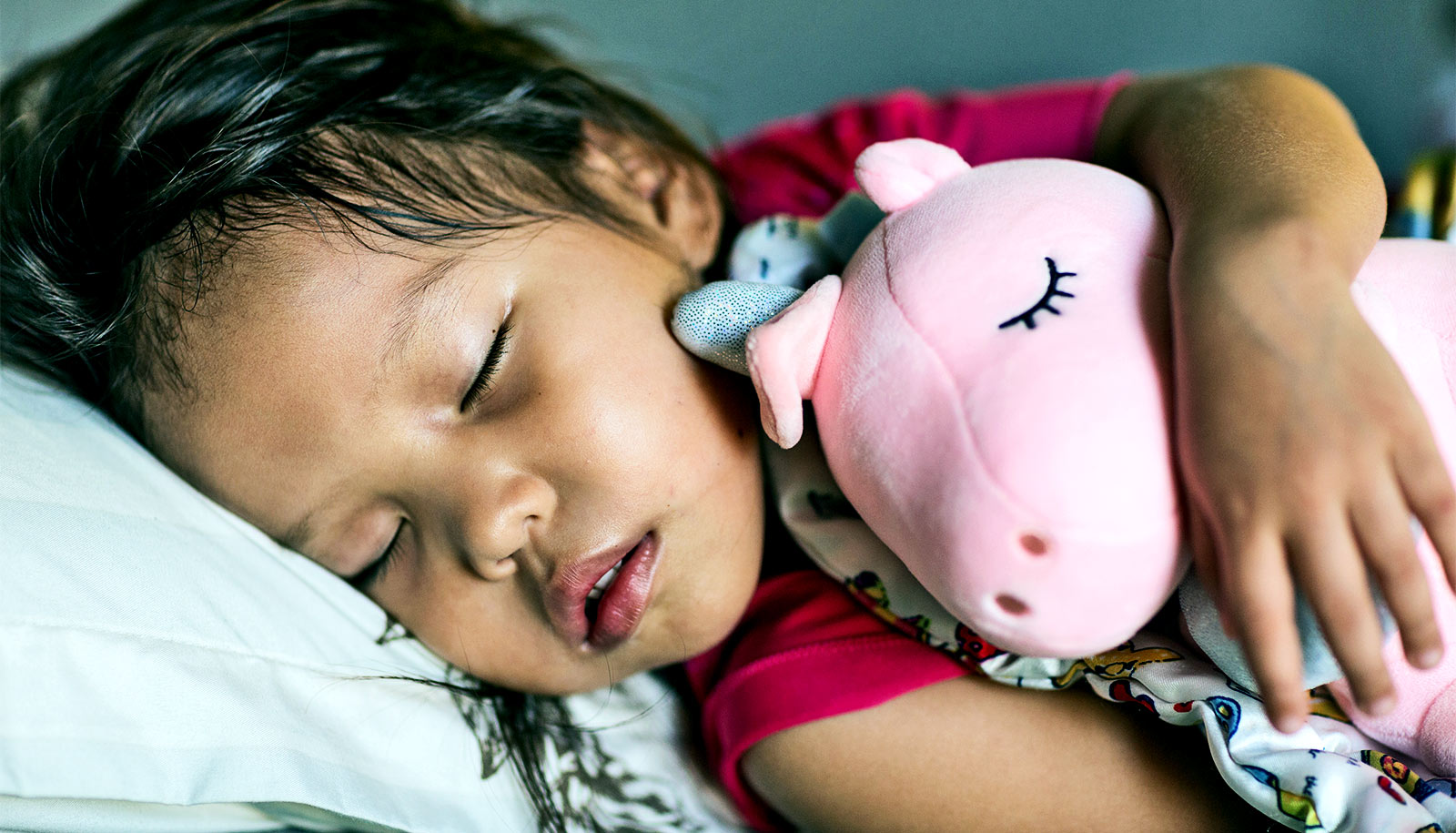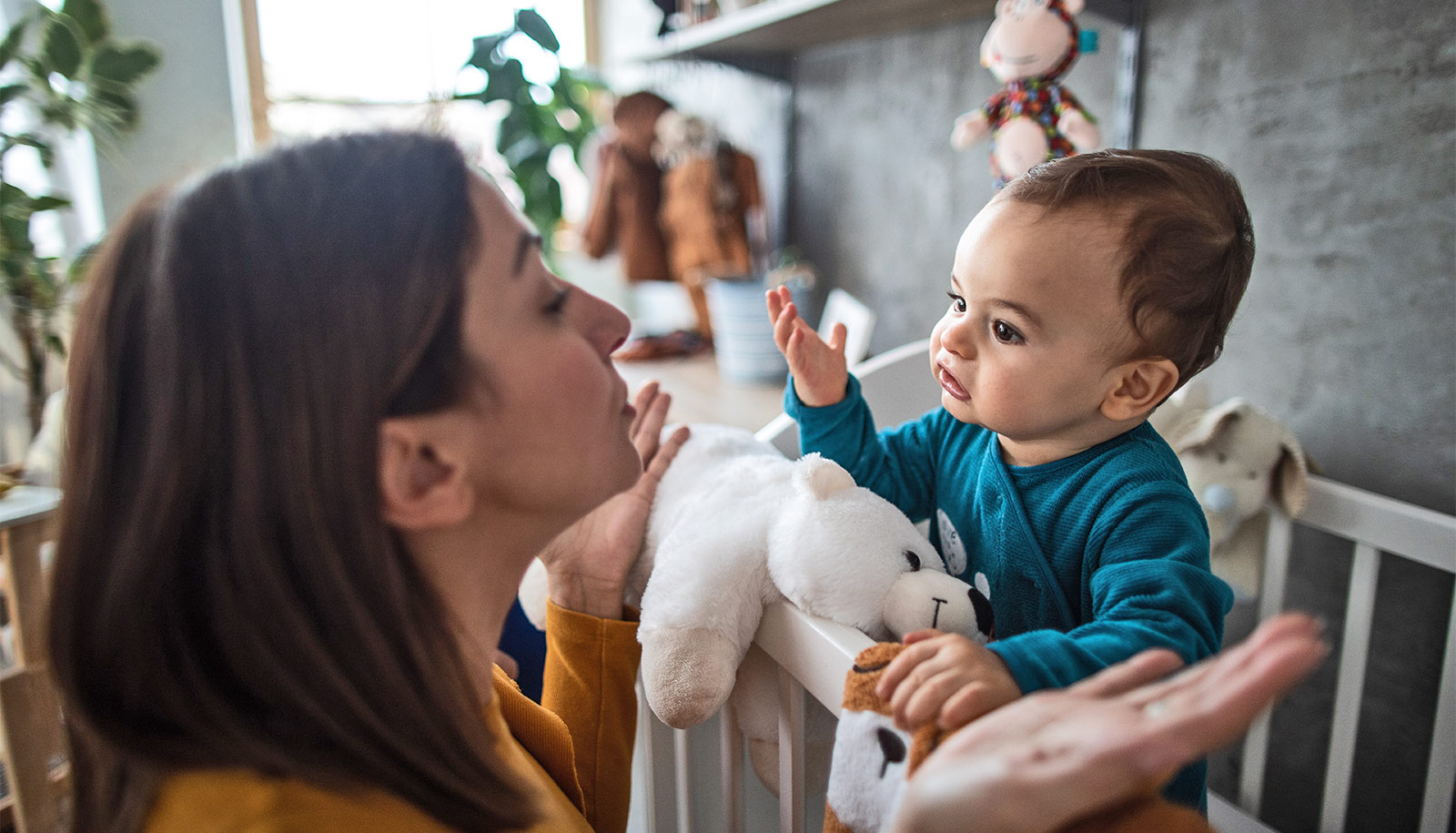A new study offers a fresh perspective on how babies connect name words with objects, a critical skill for later language development.
Before they can speak, babies between the ages of 7 and 11 months begin to pair the words they hear with the everyday objects in their surroundings. To explain this phenomenon, researchers have focused on “naming moments,” when the names and objects are presented to the infant at the same time.
However, names of objects are rarely spoken in tandem with the objects themselves, and the brain’s hippocampal memory system, which can form strong memories from singular events, may not be mature enough in infants for them to form durable memories of those rare direct co-occurrences between objects and names.
“Our study shows that a different perspective is potentially needed to explain how infants are making these links by looking at the time outside naming moments,” says Elizabeth Clerkin, a postdoctoral researcher in the psychological and brain sciences department at Indiana University Bloomington.
“We focus on understanding how infants are developing their memories for the objects and categories more generally.”
In other words, early language learning may be tied to memory representations that build up over time, rather than to repeated connections between words and objects.
To conduct their study, Clerkin and lead author Linda Smith, professor in the psychological and brain sciences department, looked at infants’ daily encounters with the objects in their surroundings, during which infants build up “a deep and robust familiarity” with their environment.
The researchers compiled a catalog of objects and the heard names of objects as they occurred in infants’ daily lives. They then considered how these experiences align with infant memory systems in a way that would make it possible to link objects and names at those scarce moments of co-occurrence.
Specifically, the researchers drew upon 67 hours of audiovisual mealtime recordings of 14 infants, ranging from 7 to 11 months old, sampling statistical regularities of the infants’ everyday interactions with people and objects. These data are part of a much larger dataset called the Home View Project, for which Smith’s lab outfitted infants with head cameras so that parents or caretakers could record several hours of daily activity in their homes.
“When scientists think about how it is that infants managed to learn words, they’ve traditionally focused on internal cognitive mechanisms,” Smith says. “This assumption about co-occurring names and objects is not wrong, but if you look at the infants’ learning environment more broadly, you see their learning task—and the mechanisms by which this learning may occur—differently.
“We need to study the structure of these learning environments, not just the internal cognitive mechanism, because that will tell us more about what needs to be in place for children to learn language.”
A full understanding of the learning environment could enable researchers and clinicians to develop interventions for children who are considered “late talkers,” revealing ways in which the environment could be augmented to help children who are learning language more slowly than their peers.
This broader view of object name learning ultimately aligns with a memory system operating in the brain’s neocortex that is known to be functional in infancy and builds up memory representations over long stretches of time, Smith says.
When well-established memories are re-activated by new information, the new information is rapidly integrated into the existing memory, she adds. A single instance of hearing the word “table,” for example, will make sense when it is heard in the context of visual memories of a table.
It’s across these two “timescales of experience”—and the workings of the neocortical memory system—that the researchers assert infants make their first links between words and objects.
“The idea is that over long periods of time, traces of memory for visual objects are being built up slowly in the neocortex,” Clerkin says. “When a word is spoken at a specific moment and the memory trace is also reactivated close in time to the name, this mechanism allows the infants to make a connection rapidly.”
The researchers say their work also has significant implications for machine learning researchers who are designing and building artificial intelligence to recognize object categories. That work, which focuses on how names teach categories, requires massive amounts of training for machine learning systems to even approach human object recognition.
The implication of the infant pathway in this study suggests a new approach to machine learning, in which training is structured more like the natural environment, and object categories are learned first without labels, after which they are linked to labels.
The study appears in the Proceedings of the National Academy of Sciences.
Source: Indiana University



